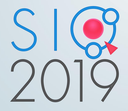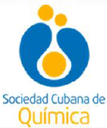
7th International Chemistry Symposium
SIQ 2019
The water pollution with pharmaceutical and personal care products become a serious problem in society due to the impacts that they can cause by their high concentrations in marine ecosystems and human health. The use of adsorbent materials for the removing of emerging contaminants (EC) present in wastewater is one of the simple solutions proposed by the scientific community. The use of natural clays for this purpose is an advantageous alternative considering the high adsorption capacity, compatibility with the environment and economic profitability. In the present work, the adsorption capacity of the cuban natural clay palygorskite (Pal) as support of sulfamethoxazole (SMX), an antibiotic considered an EC and a representative member of the sulfonamide family was evaluated. In order to establish the best conditions to increase the drug adsorption on the clay, the influence of physical-chemical parameters was studied. The adsorption capacity of SMX by the clay was determined by UV spectroscopy. The composite material obtained was characterized by infrared spectroscopy (IR), X-ray diffraction (XRD), thermogravimetric analysis (TG/DTG), Zeta potential (ZP) and nitrogen adsorption measurements. The drug desorption studies in aqueous solution indicated the reversibility of the adsorption, suggesting the potential use of the Pal clay as an adsorbent of SMX.
The water pollution with pharmaceutical and personal care products become a serious problem in society due to the impacts that they can cause by their high concentrations in marine ecosystems and human health. The use of adsorbent materials for the removing of emerging contaminants (EC) present in wastewater is one of the simple solutions proposed by the scientific community. The use of natural clays for this purpose is an advantageous alternative considering the high adsorption capacity, compatibility with the environment and economic profitability. In the present work, the adsorption capacity of the cuban natural clay palygorskite (Pal) as support of sulfamethoxazole (SMX), an antibiotic considered an EC and a representative member of the sulfonamide family was evaluated. In order to establish the best conditions to increase the drug adsorption on the clay, the influence of physical-chemical parameters was studied. The adsorption capacity of SMX by the clay was determined by UV spectroscopy. The composite material obtained was characterized by infrared spectroscopy (IR), X-ray diffraction (XRD), thermogravimetric analysis (TG/DTG), Zeta potential (ZP) and nitrogen adsorption measurements. The drug desorption studies in aqueous solution indicated the reversibility of the adsorption, suggesting the potential use of the Pal clay as an adsorbent of SMX.
About The Speaker

MsC. Dayaris Hernández Oliva






